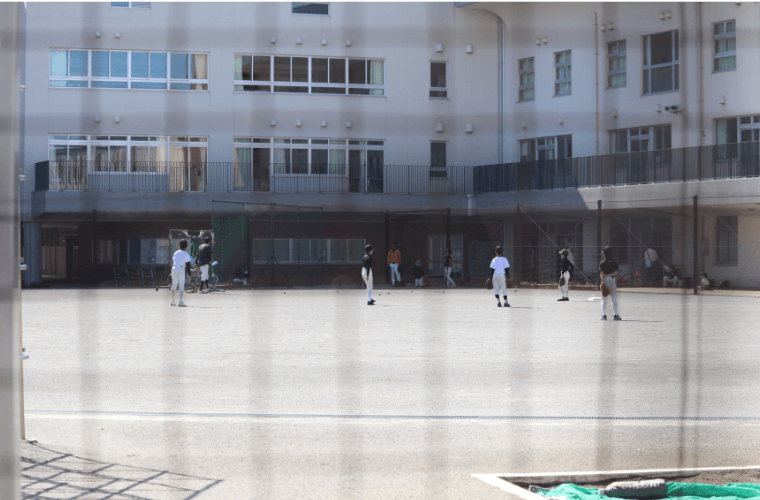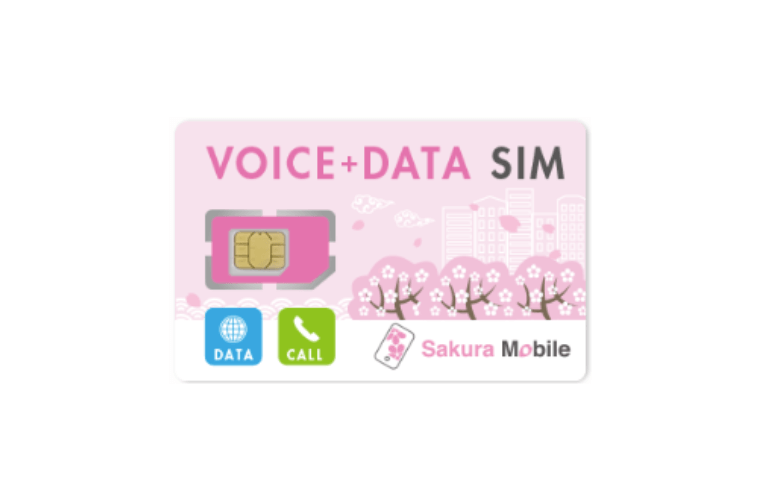Are you thinking of becoming an ALT (Assistant Language Teacher) in Japan? Do you want to move to Japan to work as an ALT in the near future?
In this article, we will briefly talk about what an ALT is and what they do in their role. We also talk about the merits of being an ALT. We will point out some things you might want to keep in mind if you are going to come to Japan to work as an ALT too.
Let’s get started.

Hello readers! Sakura Mobile is a SIM & WiFi service provider for international residents and tourists in Japan.
Our global editorial team living in Japan will introduce the charms of the country based on what we have actually experienced and felt.
Table of Contents
- What is an ALT?
- The Japanese Education System and the role of ALTs within it
- What does a Day in the Life of an ALT looks like?
- Why you might want to consider being an ALT?
- How do you apply to be an ALT?
- Where can you live in Japan?
- Some things to take note of before you come to Japan to work as an ALT
- Conclusion
What is an ALT?

The acronym ‘ALT’ stands for ‘Assistant Language Teacher’. ALTs are teaching assistants who participate in English lessons alongside another teacher (who holds a Japanese teaching license). Together with the teacher, ALTs help conduct English lessons.
Being an ALT is only one of many roles through which one can participate in Japan’s English education sector. You can also work as an Eikawa (English conversation) instructor. If you like young children, you can also work at kindergartens which offer bilingual (Japanese and English) classes as a teacher too.
In this article, we will be focusing solely on the topic of ALTs. If you are interested, please carry on reading to learn more about the role of an ALT.
↑ Go back to the table of contents
The Japanese Education System and the role of ALTs within it

Under the Japanese education system, children are required by law to attend elementary school from the ages of 6 to 12 and junior high school from the ages of 13 to 15. After they graduate from junior high school, they can apply to enter high school which they will graduate from at the age of 18.
As a result of the recent revision of the English curriculum standards by MEXT (Ministry of Education, Culture, Sports, Science and Technology), students begin formal English education in 3rd grade of elementary school. This formal English education then continues until they graduate from high school.
Generally speaking, ALTs work at local and private schools throughout Japan across varying grade levels. Some ALTs work solely at an elementary school. Others work at both an elementary and a junior high school or any combination of elementary, junior high, and high schools.
Fundamentally speaking, ALTs are expected to work as a team with a licensed teacher to conduct English lessons. However, depending on the teacher they teach with or their school situation, they might be expected to fulfill different roles.
For example, ALTs could only be expected to read English passages in a natural way or to provide a native pronunciation of English words. In other cases, ALTs might be expected to prepare a lesson plan for English classes or create fun activities for students to enjoy learning English. These activities include quizzes and cultural exchange opportunities. In addition to everything above, some ALTs might be expected to help students prepare for speech contests or school entrance interviews.
To sum it up, ALT experiences vary from person to person!
↑ Go back to the table of contents
What does a Day in the Life of an ALT looks like?

As a general rule, ALTs work from 8 A.M. to 5 P.M. on Mondays to Fridays. Here’s an example of a schedule many ALTs might find familiar.
| Working as an ALT – A Weekday Schedule | |
|---|---|
| Time | Activity |
| 7:00 A.M. | Rise and Shine! |
| 7:55 A.M. | Arrive at School |
| 8:05 A.M. | Morning Teacher’s Meeting |
| 8:40 A.M. ↓ 12:40 P.M. |
English Lessons |
| 12:40 P.M. ↓ 130 P.M. |
Lunch |
| 1:40 P.M. ↓ 2:30 P.M. |
English Lessons |
| 2:30 P.M. ↓ 5:00 P.M. |
Grading Papers Lesson Prep Discussion with Teachers of English |
| 5:10 P.M. | Leave School! |
In addition to participating in English lessons at school, some ALTs also take up an active role in their school’s club activities. For example, some ALTs help coach their school’s sports team, or join in brass band practices.

ALTs are usually free on weekends unless they have to attend a school event. In that case, an off-in-lieu would usually be given. As a result, many ALTs usually use their weekends to travel around Japan or improve their language skills.
↑ Go back to the table of contents
Why you might want to consider being an ALT?
There are many reasons why you might want to consider becoming an ALT. Here are a few points that might get you thinking.
- You get to experience work life in Japan!
- You get to interact with Japanese people (both children and adults)!
- You get to experience Japanese school life!
- You get to travel around Japan and see everything she has to offer in your free time!
- You get to learn, practice, and use Japanese in your daily life!
Are you ready to take the leap of faith?
↑ Go back to the table of contents
How do you apply to be an ALT?

If you are interested in applying to become an ALT, you must meet these 2 basic requirements to be eligible for the role.
- Speak good English
- As a general rule, hold at least a Bachelor’s degree
There are various organizations and companies that are actively recruiting ALTs. We will list some of the more major ones below.
Organization
JET (Japan Exchange and Teaching) Programme
- This Programme is jointly run by the 3 Japanese government ministries: the Ministry of Internal Affairs and Communication, the Ministry of Foreign Affairs, and MEXT.
- You have to apply through the Japanese embassy in your city, state, or country.
Jet Programme – https://jetprogramme.org/en/
Private Companies
Interac – https://interacnetwork.com/
Borderlink – https://www.borderlink.co.jp/alt/
Altia Central- https://recruiting.altmoot.com/
RCS Cooperation – https://rcs-ed.co.jp/en/alt-en
Heart Cooperation – https://heart-school.jp/en/recruit/]
If you’re interested, have a look at the various options and apply to the one you are most interested in.
↑ Go back to the table of contents
Where can you live in Japan?

You would be able to live anywhere in Japan.
To be more specific, depending on the organization or company you apply for, you would be able to indicate the region, city, or area you would prefer to work in. However, do note that you will not always be given your preferences!
Regardless of where you might be placed, you will be able to experience real Japan. You will see Japan’s many faces – from its rustic countryside abound with rice fields to its technologically advanced, futuristic metropolises.
↑ Go back to the table of contents
Some things to take note of before you come to Japan to work as an ALT
Moving to Japan to work as an ALT might sound like an adventure of a lifetime. It indeed is. But just as in any adventure, there are some things you might want to prepare yourself for beforehand.
Mental/ Emotional Health Aspect

It might be a good idea to try your best to prepare yourself mentally and emotionally before you move to Japan and begin working as an ALT. It is a new country and a new environment – everything is going to be exciting. On the flip side, you might have to learn new cultural mores, bridge cultural gaps, and build new friendships as well as relationships. But don’t fret! Believe in yourself! Make this the adventure of a lifetime you want it to be!
↑ Go back to the table of contents
Administrative Aspect

As a new foreign resident of Japan, there are a number of administrative processes that you have to complete. We highlight 2 of the most fundamental ones.
-
- Residence Card 「在留カード・zairyu kado」
If an organization or company hires you as an ALT, it would probably mean that you would have your Japanese visa sponsored by them. As part of the same process, you would also receive a ‘Residence Card,’ which you would usually pick up at the airport when you first arrive in Japan.
After moving into your new home, you would have to go to the local City Hall or Prefectural Office to register your new address.
-
- Setting Up a Japanese Bank Account
After you arrive in the area you would be working in, it is advisable to set up a Japanese bank account as soon as possible. You would need a Japanese bank account to make essential payments such as your utility bill, rent, etc.
Japan has various banks, from small local banks to large major banks. You would have to choose the best bank for your needs. A point to note here is that for smaller local banks, you would usually be issued a ‘cash card,’ which can only be used for withdrawing and depositing money and a paper bank book. For major banks, it would be usually possible to receive a ‘debit card’ when you set up a new Japanese bank account.
↑ Go back to the table of contents
Financial Aspect (Start-Up Cost)

Moving into your new home in Japan would cost a fair amount of money. There is a high initial fee that you would have to pay when you sign an apartment rental contract. We will list four basic fees that you would likely have to initially pay when you sign the contract.
-
- Security Deposit 「敷金・shikikin」
The ‘Security Deposit’ is a deposit you pay when you sign the rental contract. The landlord or real estate agency uses this deposit to repair and fix an damages in the apartment. You will get this deposit back when you move out of your apartment. However, the amount you receive depends on the condition the apartment is in after you move out of it.
-
- Agent Fee「仲介手数料・chukaitesuryo」
The ‘Agent Fee’ is a fee you pay to the real estate agent for using their services. (You only pay this fee when you sign the rental contract agreement with the real estate agent.)
-
- Guarantor Fee 「保証料・hoshoryo」
As a general rule, you will need a guarantor when you sign an apartment rental contract. Foreign residents are usually required to use a guarantor company that will act as their guarantor for their apartment rental contract. The ‘Guarantor Fee’ is paid to the guarantor company for their services.
-
- Gratuity Money 「礼金・reikin」
Gratuity Money is paid to the landlord through the real estate agency when you sign the rental contract. Nowadays, the number of apartments that do not require ‘Gratuity Money’ has increased. However, for apartments that are in-demand, there is a good chance that you might still have to pay ‘Gratuity Money’.
↑ Go back to the table of contents
Cellphone/ Internet Aspect

When you move to Japan to work as an ALT, the very first thing you would likely want to set up is your cellphone and SIM card. There are indeed many SIM card services available in Japan. However, we would like to recommend our Sakura Mobile Voice+Data SIM card for six main reasons

First, you will be able to use your cellphone to make calls and access the internet from the get-go. Apply for our Sakura Mobile Voice+Data SIM card at least three days before you arrive in Japan. After touching down in Japan, you can pick up your Sakura Mobile Voice+Data SIM card from 3 of Japan’s largest airports: Narita International Airport (NRT), Haneda Airport (HND), and Kansai International Airport (KIX). In addition to that, you can also choose to visit our office in the Shinjuku district of Tokyo to pick up your SIM card.
Second, we offer English support for all of our services. We will help you along every step of the way as you set up your Sakura Mobile Voice+Data SIM card.
Third, our Sakura Mobile Voice+Data SIM card runs on the docomo 4G/LTE network. The docomo network has a national coverage of 99% of all populated areas in Japan. You’ll be connected wherever you are in Japan.
Fourth, our Sakura Mobile Voice+Data SIM card comes with a Japanese cellphone number. Having a Japanese cellphone number is often a necessary requirement when you go about setting up your life in Japan. You would need it in a variety of scenarios – when you set up your bank account, fill in the details for your apartment rental contract, etc.
Fifth, our Sakura Mobile Voice+Data SIM card is affordable. We offer a ‘LITE’ plan, with 4GB data, as well as a ‘PREMIUM’ plan with 25GB data.

Sixth, if you sign up for our Sakura Mobile Voice+Data SIM card now, you will enjoy a special promotional discount. Usually, the activation fee for our SIM card costs 16,500 JPY. However, with the discount, it will only cost 5,550 JPY. That’s a lot of money saved, which you can use to pay for other expenses in Japan!
With our Sakura Mobile Voice+Data SIM card, you will be able to enjoy a smooth start to the adventure of your lifetime awaiting you!
For the best SIM cards for long-term stays in Japan, be sure to check out the following article!
8 Best SIM Cards for Long-Term Stays in Japan
↑ Go back to the table of contents
Conclusion

Are you interested in working in Japan as an ALT? Will you be applying to work as an ALT in Japan? Perhaps you are already in the midst of preparing to move here?
Regardless of whatever stage you are at, we wish you all the best! If you are interested in signing up for our Sakura Mobile Voice+Data Sim when you get here eventually, do not hesitate to reach out to us or visit our homepage for more details.
Other JET Stories and Information
Check out our pages featuring information about the JET Programme other stories about the programme, written by JET participants sharing their experiences and advice!
A JET Guide to Hyogo Prefecture
Those looking for an affordable Japanese cellphone plan, check out Sakura Mobile!
CUSTOMER’S VOICE
Features of Sakura Mobile
- Get large amounts of data (maximum 25 GB/month) for only 3,980 JPY/month
- Connection with docomo, the biggest and fastest network in Japan
- Full English Support 7 days a week. The homepage and the “My Page” (where you can check your remaining data, change your plan, terminate your contract, etc.) for users are all in English
- Complete your order online and have it delivered the next day at the earliest
- For those who are not yet in Japan, you can arrange to pick up your SIM card from the airport
Sakura Mobile has helped thousands of new residents and travelers in Japan stay connected during their stay in Japan.
You can find more information about Sakura Mobile’s plans here.

